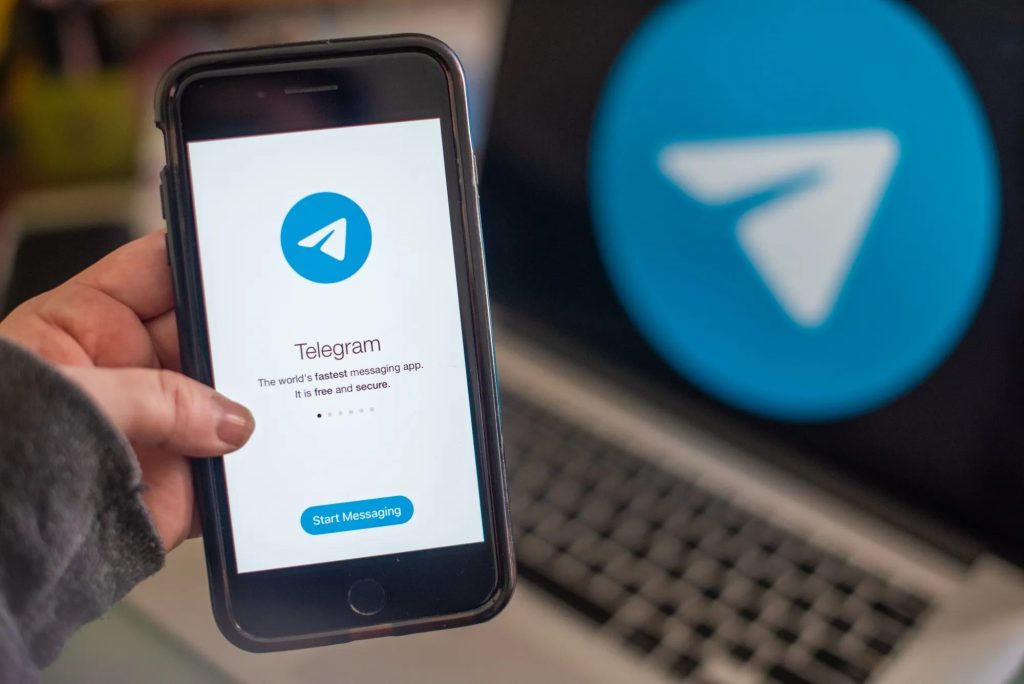With the backing of Telegram and a large user base, the TON ecosystem is one of the potential dark horses that developers and users are looking to. Today, let’s explore the project with us through this article The Open Network Review.

What is The Open Network?
The Open Network (TON) is a decentralized, open-source, layer-1 blockchain that was developed by the brothers Nikolai and Pavel Durov-founders of the popular messenger Telegram-skewed for scalability and ease of use, making access to dApps and smart contracts even more widespread.
It was made for high-performance applications, namely, to process huge volumes of transactions at very fast speeds. What differentiated TON from other blockchains was the fact that it shifted from a company-led project to a community-led project. Because of the regulatory issues, Telegram stopped its direct involvement in the project, but in came developers from all over the world, continuing TON as an open-source project with a decentralized vision.

Today, the TON blockchain is developing under the guidance of its global community with the purpose of making blockchain technology even more accessible and scalable for mass-market applications.
Read more: Top 10 TON Ecosystem Coins by Market Cap
History of The Open Network
The journey of The Open Network started back in 2018 when, under the guidance of founder Pavel Durov, Telegram decided to create a blockchain integrated with its messaging service.
The Telegram Open Network project was aimed at providing users with a secure, fast, and easily scalable application. With a lot of planned features in stock, including even decentralized DNS and VPN and even a dApps platform, the attention towards it was rightfully huge. Its ICO raised $1.7 billion, making this one of the most successful beginnings ever.
However, not very long afterwards, it faced legal difficulties. The SEC believed that Grams, the native token of the TON network, was an unregistered security offering. In 2020, the project was shut down by a court ruling. Pavel Durov then officially left the project.

Telegram’s involvement was over, and under the management of developers Anatoliy Makosov and Kirill Emelyanenko, it was renamed The Open Network. Despite this transition, TON and Telegram still maintained informal relationships, with mutual support for their development.
Since 2023, Telegram warmed up to TON once more. The two are making several announcements around partnerships and grant programs to spur further development in the ecosystem. Telegram now also supports the blockchain, with products from the ecosystem going directly into Telegram for seamless user access.

In April 2024, Tether announced a partnership with the TON Foundation to launch US$60 million worth of USDT on the TON blockchain. It has become the 4th largest blockchain supporting Tether.
Moreover, TON introduced the gold-pegged stablecoin Tether Gold (XAUT) to offer better cross-border payment options. Such cross-border payments are as easy as sending a message via Telegram and can, therefore, reach more than 900 million users, a truly promising future for the network.
Read more: Top 10 Tap To Earn Projects That Are Booming In 2024
How The Open Network Works
TON develops the latest technologies to enhance blockchain scalability, efficiency, and functionality. This shall be through a package involving Proof of Stake, dynamic sharding, and a TON Virtual Machine that works coordinately to create a highly scalable and energy-efficient ecosystem.
Proof of Stake: Energy-Efficient Consensus
TON blockchain utilizes the Proof of Stake consensus algorithm, PoS, which uses much less energy compared to common Proof of Work systems, PoW. In the proof of stake model, the network is secured by validators, not miners. Validators make this happen because they lock up their tokens as collateral, and the probability of being selected to validate any given transaction goes up with more committed tokens. Then, the validators filter and confirm new blocks for the blockchain to work perfectly and safely.
Dynamic Sharding: Boosting Scalability
TON introduces dynamic sharding, a technology developed to try and solve the scalability problem of blockchains. Basically, sharding is a division of the blockchain into small pieces called shards, which are able to process a certain number of transactions and store data on their own independently of each other. Similar implementations of sharding have already been undertaken by other blockchains, such as Solana and Near, with Ethereum planning to do so with future updates.
Smart Contracts Powered by the TON Virtual Machine
TON Virtual Machine or TVM is the backbone for running smart contracts on the network, pretty much like Ethereum’s Virtual Machine does on Ethereum. Developers leverage the TVM to automate processes such as transferring assets, message signing, and minting tokens.
TON is a “blockchain of blockchains” that includes one masterchain and many workchains. The masterchain keeps track of the validators, controls the assets that are staked, and also serves to coordinate all components of the network.

Workchains perform functions concerning smart contracts and dApps, which then get split into shardchains. These shardchains enable parallel processing of the transactions. Hence, several thousand transactions per second are capable of being processed at very low costs.
These state changes are processed by the TVM, getting requests from shardchains, while validators reach a consensus on the current state of the network. Such architecture enables TON to provide high-speed, effective communication between dApps and seamless exchange of resources throughout the network.
Read more: Top 10 Best Crypto Telegram Bots In 2024
TON Blockchain Products
TON Payment
TON Payment is a fast, inexpensive payment system based on the TON blockchain. With its capability for off-chain transaction processing, TON Payment allows for speed and very low overhead, hence suitable for fast and cheap transfers.
TON Proxy
TON Proxy works as a kind of anonymization layer over the TON network, enhancing user privacy and security by anonymizing the IP address of a user. Much like any VPN service, TON Proxy can let users securely and privately connect to the internet, which is highly valued in regions that have tight internet censorship in place to protect the identity of a user and guarantee safe network interactions.
TON DNS
The Ton DNS is a kind of decentralized domain naming service, which makes the usage of crypto wallets, smart contracts, and websites easier within the TON ecosystem. Its architecture is totally decentralized, mostly similar to the classic DNS. Ton DNS gives human-readable names for accounts, smart contracts, and dApps, therefore improving usability and usability for blockchain users.
TON Storage
TON Storage is decentralized in nature. It uses peer-to-peer file-sharing technology to let users store public and private data without occupying space in the user’s device. By its very distributed storage design, it further secures and provides better access and efficiency in data management.
TON Wallet
TON Wallet is the official digital wallet for the TON ecosystem. Users can store TON coins and TON721 standard tokens, as well as connect to DApps. The supported platforms include Android, iOS, Windows, and macOS, allowing widespread access to be made possible by users.
Read more: How to Create and Use TON Wallets?
TON Sites
TON Sites are fully decentralized websites residing exclusively in the TON network. Working much like regular websites, they are reachable only through their public entry points on The Open Network, serving as a new paradigm for creating and consuming digital content solely within that environment.
The Strong Growth of the TON Ecosystem
The Telegram Open Network is different in a number of aspects and benefits that have been accruing to numerous blockchains. Probably the biggest strength of this blockchain is its huge user base, which is based on Telegram itself.
Since it was created, TON has reached some critical milestones. While braving regulations, it allows innovation at the community level. The cryptocurrency projects are better positioned to capitalize on the ongoing blockchain wave, considering the integration of TON with Telegram.

Among such notable developments is the tap-to-earn game integrations on the Telegram platform, nailing the entertainment while earning angle. It means an effort to bring blockchain features even to ordinary users, making the technology friendlier and more interactive.
For quite a long period of time, the network’s on-chain indicators have been acting well. Early this year, TON saw its addresses surge above 52 million with 3 million active users per day, while its transaction volume touched an incredible 9 million transactions daily, 50 times higher than at other periods.
Currently ranked as the tenth-largest cryptocurrency, TON blockchain boasts a market capitalization of $13.5 billion, while its fully diluted valuation stands at $27.3 billion.
Read more: Top 5 Telegram Trading Bots You Should Know
Relationship Between Telegram and The Open Network
Although initially developed as an integral part of Telegram’s ambitious blockchain project, The Open Network moved out on its own, with a close affinity to Telegram. TON is no longer owned by Telegram. Still, it works very closely with the latter in many spheres.
On its part, Telegram has grown from a secure messaging application to a global platform, with over 2.5 billion registered accounts and 900 million monthly active users. It has seen an average annual growth rate of 40%, which is impressive and attained.
This collaboration between the Ton Foundation and Telegram has existed since the development of the network. Since the beginning of this network, Pavel Durov, the founder of Telegram, has spoken his mind in support of TON numerous times through his Telegram channel, reaffirming the collaboration.

TON is the financial infrastructure for the flow of funds within the application. Going forward, Telegram has planned to build itself as a Super App which would contain Telegram Apps Centre (TAC) and Telegram Mini Apps (TMAs). This open ecosystem will host a large number of applications, each integrated with Telegram Wallet.
Telegram is doing just what WeChat did. The messaging app introduced features such as Telegram Wallet and TMAs, which are all on the back of the financial system of the TON blockchain. Now, the Ton Foundation and Telegram are busy attracting users by developing TMAs on both Web2 and Web3 environments. These TMAs also receive support via the Tencent Cloud Startup Program from Tencent, which further scales their reach and capabilities.
Conclusion: The Open Network Review
The Open Network is a blockchain developed to serve as a platform for users to experience Web3 differently from DeFi, dApp, DAO, etc. Currently, developers on the TON ecosystem are creating a Web3 ecosystem to aim for mass adoption so that users can easily access crypto. In the future, the TON blockchain can be the spearhead of user-oriented ecosystems. Hopefully, our article, The Open Network Review, has helped you have a more comprehensive view of this project.
FAQs
Does TON have a Layer 2?
There is currently no Layer 2 running on TON.
Can I use TON to develop dApps?
Yes. TON currently provides tools for developers to build dApps on it.
Is TON a Telegram project?
TON used to be a Telegram project but since Telegram decided to abandon its cryptocurrency project, the project’s open source data has been adopted by independent developers.
| DISCLAIMER: The information on this website is provided as general market commentary and does not constitute investment advice. We encourage you to do your own research before investing. |



















